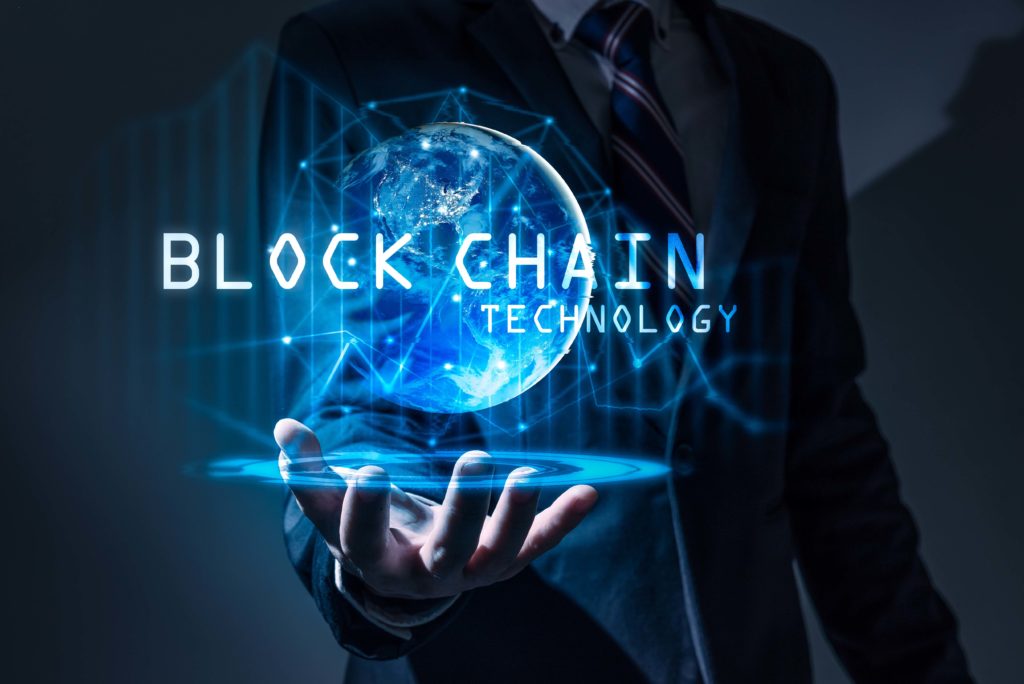by Maria Luisa Doldi
Among the technologies that today, in the agricultural field, make the news, there is also The blockchain
Although young – it was born just over ten years ago – the Blockchain is now being considered by many sectors who are wondering if and how it could be useful to their supply chain. These include agriculture, so much so that both the University of Wageningen and FAO have recently published papers on the possible ways of using this technology for the agricultural supply chain. “We mainly talk about Blockchain, but to be precise we should talk about Distributed Ledger and Blockchain. This technology should be understood as a new way of making transfers of value online, so much so that we talk about them by linking them to the concept of Internet of Value” explains Valeria Portale, Director of the Blockchain & Distributed Ledger Observatory, Digital Innovation Observatories of the Polytechnic University of Milan. And she adds: “There is still a lot of confusion about the definition and difference between Distributed Ledger and Blockchain. Simplifying, we can say that Blockchain technology is part of the largest group of Distributed Ledger technologies to which it adds some features». The name “distributed ledger” can be translated into Italian with “distributed register” and this helps to understand the structure and functionality of the technology: it should be thought of as a network in which the different nodes are as many online registers which, in fact, are distributed and which all contain the same information. The network participants have access to the registers and can read the information contained in them or add information. Every addition made in a node – for example, the registration of a goods transfer – is validated not by a “central body” but by a consent algorithm and once verified it is copied and recorded in all the registers of the network. The principle of immutability applies so that transactions, once added, cannot be canceled and, above all, cannot be modified or counterfeited. “It is a registration system that undermines the traditional system: it is decentralized, there is disintermediation, it is unchangeable, it is transparent and traceable because each transaction is perfectly traceable to its starting point and the information related to it». But there is something else: «it is a system that is highly suitable for being programmable so that certain actions can be planned whenever certain conditions occur».
[su_box title=”Promising technology” box_color=”#43634b”]While suffering from the limitations due to infrastructure and other technical issues in its implementation, this technology also promises to bring many benefits. For example, creating an ecosystem in which transactions can be carried out in a decentralized, secure and transparent way, probably at lower costs than traditional systems. These promises could also greatly benefit the agricultural supply chain, where traceability, security and counterfeiting are more relevant issues than ever.[/su_box]
Traceability and Blockchain
Food traceability is the activity of keeping track of every step leading to the production and marketing of a food product. There are several online traceability systems in use today and Blockchain is one of them. According to the Smart Agrifood observatory of the Polytechnic University of Milan, between 2017 and 2018 the cases of application of Blockchain to the agrifood sector have more than doubled precisely to support the traceability process. The characteristics of Blockchain that make it an ideal traceability tool are its possible distribution along a supply chain that sees different actors who often do not know each other, the standardization of the tool among the different actors in the supply chain, the transparency and immutability of the information entered.
In concrete terms, how could the Blockchain be applied in an agricultural supply chain?
The use of this technology could provide a faithful and unchangeable recording of all the steps that concern a product, uniquely identified for example with a QR code, from the farmer to the retailer. This would create a chain of information that in real time and faithfully, with no possibility of tampering, provides all interested actors with information on where the product is located, what treatments it is subjected to, under what conditions it is. This system would make it possible to summarize in a transparent way the history of the product, its authenticity, facilitate controls and reduce the possibility of fraudulent behaviour. Registration would take place without third parties and without the possibility of tampering; the consistency of the information would be automatically verified by the registry system distributed through its consent algorithms. The product would reach the customer with the same QR code it was equipped with at the beginning of the supply chain and with a simple scan, the customer would be aware of the entire supply chain. In such a system the information that can be conveyed is innumerable. For example, it would be possible to trace the virtuous behaviour of the farmer during the cultivation process, to record certifications, etc. This system could bring a considerable degree of transparency, safety and sustainability to the food supply chain.
Smart contract and Blockchain
Blockchain and distributed ledgers technology also allow the creation of so-called “smart contracts”. It is a program that automatically performs certain functions when certain conditions are met. In other words, it is a contract that automatically performs certain functions when certain conditions defined by the contracting parties occur. The advantage of these contracts is the possibility of simplifying bureaucracy by protecting the parties involved and ensuring the integrity of data and information.
The contract works automatically, without the need for human intermediaries. According to the sources mentioned, the automation of the contracts would also provide huge savings in legal and transaction costs and would have the advantage of making the transactions take place in real time, once for example the goods have been delivered and their quality verified. “In agriculture, smart contracts and automated payments would be a turning point,” says a FAO document. The application of such contracts, in fact, is not limited to the payment of goods, already a critical field in itself, especially when the forces involved are different, but also, for example, to the collection of insurance premiums.
“An agricultural insurance based on a smart contract, which considers regularly recorded climate data on the field, the analysis of possible climate incidents such as floods or drought and which automatically triggers certain payments once certain climatic conditions have occurred, could facilitate the payment of the premium in case of natural disasters”. Very often, in fact, the bureaucratic horde to be overcome does not allow the farmer to reach his insurance premium, even though this is his due or does not allow him to do it in a reasonable time. FAO says that in many regions of Asia, for example, there are “low cost” insurance schemes, created and conceived as a social protection option for small farmers, often affected by floods or drought. Unfortunately, however, it is found that the adoption of such contracts remains relatively low among the poorest farmers because the mechanisms on site to validate damages and make payments are still too expensive in terms of time and bureaucracy and therefore are not chosen. In situations like these, the FAO document states, having contracts that go into payment automatically, without the need for further bureaucracy or on-site inspections to verify the damage, would be a great help for agriculture, especially for the poorest.

Blockchain for the agricultural supply chain? Further research is undoubtedly needed to analyze possible applications and potential implications but it is necessary to consider them as an opportunity (Source: FAO)
Promises or mirages?
The example just mentioned opens a small window on the vast possibilities that the Blockchain can offer agriculture: not only transparency and traceability but also inclusion, rural development, support for disadvantaged agriculture, thus promising to bring not only economic but also, in a sense, social advantages.
Ultimately, these technologies can also empower governments to achieve inclusive economic growth objectives in the agricultural sector as well as be a catalyst for sustainable development and the achievement of the Millennium Goals to combat hunger and poverty.
But it is not all that simple and immediate. In order to really perform its possibilities, the Blockchain requires a proper framework: in order to realize its full potential for agriculture, appropriate conditions must be created. We need to improve infrastructures and digital skills, everywhere, but particularly where inclusion is most difficult, in developing countries and in the most disadvantaged and isolated rural areas, to ensure that technology brings the benefits it could offer.
For a sustainable development of the Blockchain
As this technology continues to evolve and develop, the international community must ensure that its development and implementation are conducted in an inclusive and beneficial way for the agri-food industry as a whole.
As both FAO cited documents underline, at the current rate of development, agri-food multinationals will certainly be the first to establish the technology in the sector.
In order to ensure that all market actors benefit from the productivity, transparency and security increases resulting from these applications, it is important that policy and all organizations focused on agriculture take a leading role in raising awareness, in developing the capacity of agricultural stakeholders to adopt such technologies and to promote international public-private cooperation for their development and implementation in an inclusive way in the agricultural sector.
«Agriculture-focused organizations should continue to improve their knowledge base and conceptualize the types of technical assistance needed to prepare and support agricultural actors and governments in playing an active role in Blockchain-enabled agricultural value chains” is emphasized in the two reports.
Further research is undoubtedly needed to analyze these applications and their potential implications for the agricultural sector. But it is imperative for national and international organizations and for politics to ensure that all actors in the supply chain benefit from the implementation of these technologies, which are undoubtedly not a panacea for all evils, but certainly open many positive possibilities. ν




